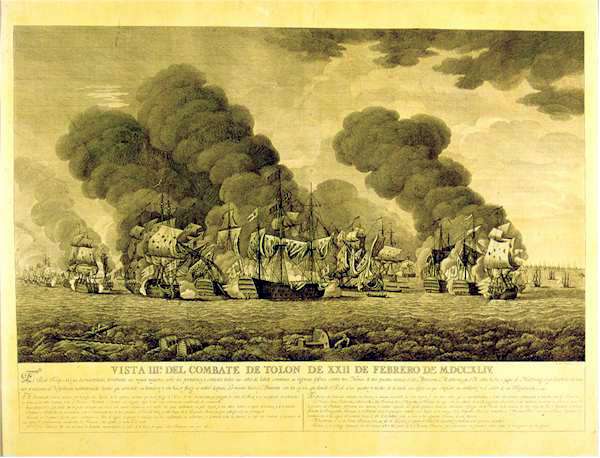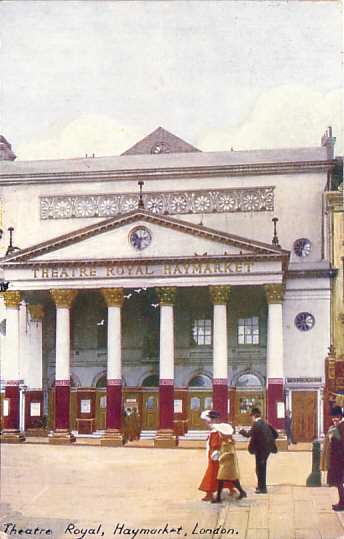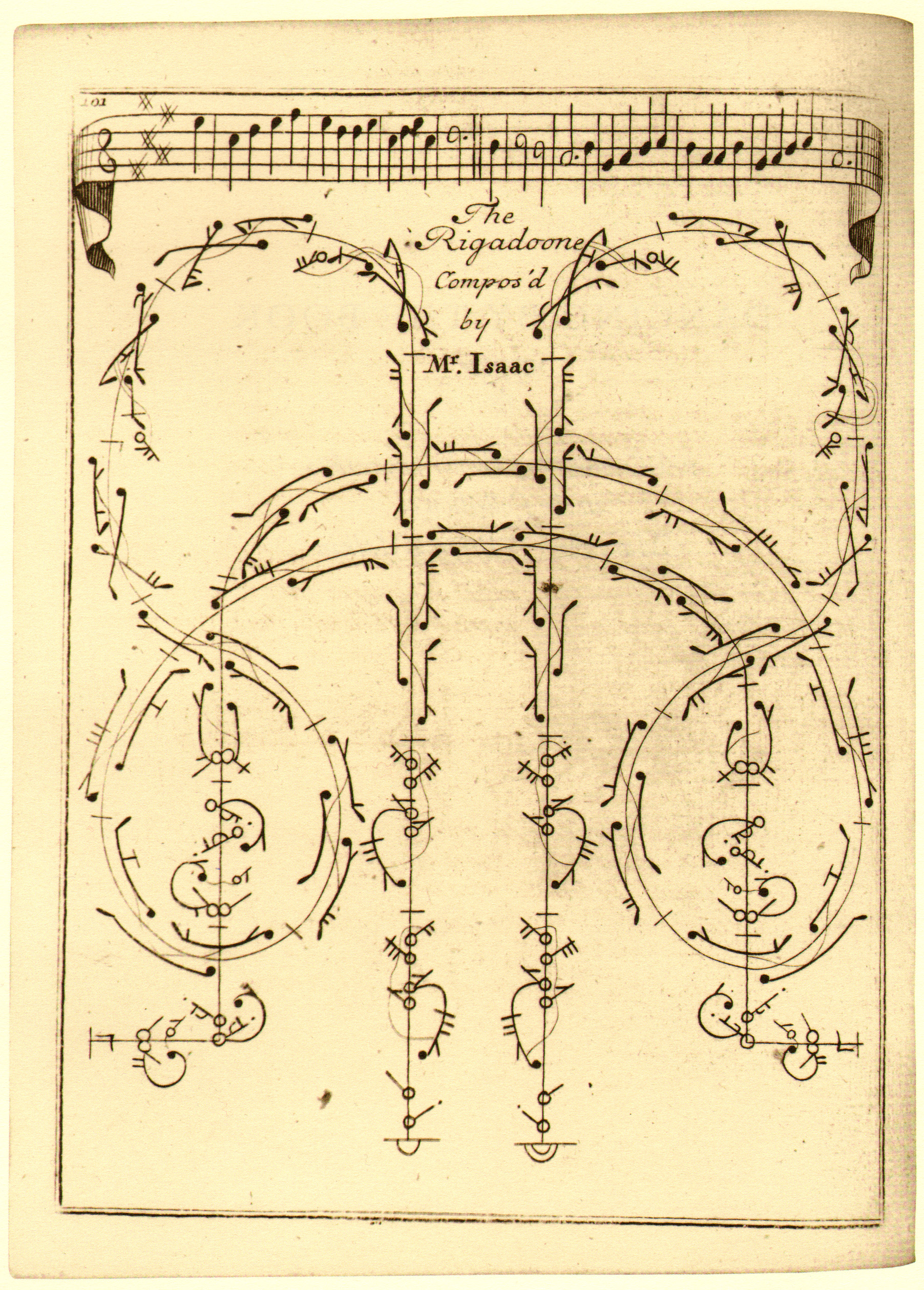|
John Essex
John Essex (born c.1680 - died 1744, London) was an English dancer, choreographer and author who promoted the recording of dance steps through notation as well as performing in London theatre. In 1728 he published his major work ''The Dancing-Master, or, The Art of Dancing Explained'', a translation of Pierre Rameau's ''Le maître à danser'' (1725). Life He is first mentioned in record in 1702 as a dancer at Drury Lane Theatre, performing serious and comic dances. In 1703 he left after a dispute with the manager, Christopher Rich. He set up as an independent dance teacher and teacher of music in Rood Lane (off Fenchurch Street) in the parish of St Dionis Backchurch in the City of London.BDA Vol 5 He became part of a group of dance teachers who sought to modernise and improve the teaching and recording of dancing. These included a Mr Isaac, Thomas Caverley, and John Weaver.Goff in ODNB Essex was involved in several publications in the early 1700s which brought to England and ... [...More Info...] [...Related Items...] OR: [Wikipedia] [Google] [Baidu] |
John Essex Dance Frontispiece
John is a common English name and surname: * John (given name) * John (surname) John may also refer to: New Testament Works * Gospel of John, a title often shortened to John * First Epistle of John, often shortened to 1 John * Second Epistle of John, often shortened to 2 John * Third Epistle of John, often shortened to 3 John People * John the Baptist (died c. AD 30), regarded as a prophet and the forerunner of Jesus Christ * John the Apostle (lived c. AD 30), one of the twelve apostles of Jesus * John the Evangelist, assigned author of the Fourth Gospel, once identified with the Apostle * John of Patmos, also known as John the Divine or John the Revelator, the author of the Book of Revelation, once identified with the Apostle * John the Presbyter, a figure either identified with or distinguished from the Apostle, the Evangelist and John of Patmos Other people with the given name Religious figures * John, father of Andrew the Apostle and Saint Peter * Pope J ... [...More Info...] [...Related Items...] OR: [Wikipedia] [Google] [Baidu] |
Caroline Of Ansbach
, father = John Frederick, Margrave of Brandenburg-Ansbach , mother = Princess Eleonore Erdmuthe of Saxe-Eisenach , birth_date = , birth_place = Ansbach, Principality of Ansbach, Holy Roman Empire , death_date = , death_place = St James's Palace, London, Great Britain , burial_date = 17 December 1737 , burial_place = Westminster Abbey, London Caroline of Brandenburg-Ansbach (Wilhelmina Charlotte Caroline; 1 March 1683 – 20 November 1737) was Queen of Great Britain and Ireland and Electress of Hanover from 11 June 1727 until her death in 1737 as the wife of King George II. Caroline's father, Margrave John Frederick of Brandenburg-Ansbach, belonged to a branch of the House of Hohenzollern and was the ruler of a small German state, the Principality of Ansbach. Caroline was orphaned at a young age and moved to the enlightened court of her guardians, King Frederick I and Queen Sophia Charlotte of Prussia. At the Prussian court, her previously limited education was widen ... [...More Info...] [...Related Items...] OR: [Wikipedia] [Google] [Baidu] |
Year Of Birth Uncertain
A year or annus is the orbital period of a planetary body, for example, the Earth, moving in Earth's orbit, its orbit around the Sun. Due to the Earth's axial tilt, the course of a year sees the passing of the seasons, marked by change in weather, the hours of daylight, and, consequently, vegetation and soil fertility. In temperate and subpolar climate, subpolar regions around the planet, four seasons are generally recognized: spring (season), spring, summer, autumn and winter. In tropics, tropical and subtropics, subtropical regions, several geographical sectors do not present defined seasons; but in the tropics#Seasons and climate, seasonal tropics, the annual wet season, wet and dry seasons are recognized and tracked. A calendar year is an approximation of the number of days of the Earth's orbital period, as counted in a given calendar. The Gregorian calendar, or modern calendar, presents its calendar year to be either a common year of 365 days or a leap year of 366 days, a ... [...More Info...] [...Related Items...] OR: [Wikipedia] [Google] [Baidu] |
English Male Dancers
English usually refers to: * English language * English people English may also refer to: Peoples, culture, and language * ''English'', an adjective for something of, from, or related to England ** English national identity, an identity and common culture ** English language in England, a variant of the English language spoken in England * English languages (other) * English studies, the study of English language and literature * ''English'', an Amish term for non-Amish, regardless of ethnicity Individuals * English (surname), a list of notable people with the surname ''English'' * People with the given name ** English McConnell (1882–1928), Irish footballer ** English Fisher (1928–2011), American boxing coach ** English Gardner (b. 1992), American track and field sprinter Places United States * English, Indiana, a town * English, Kentucky, an unincorporated community * English, Brazoria County, Texas, an unincorporated community * Engli ... [...More Info...] [...Related Items...] OR: [Wikipedia] [Google] [Baidu] |
1744 Deaths
Events January–March * January 6 – The Royal Navy ship ''Bacchus'' engages the Spanish Navy privateer ''Begona'', and sinks it; 90 of the 120 Spanish sailors die, but 30 of the crew are rescued. * January 24 – The Dagohoy rebellion in the Philippines begins, with the killing of Father Giuseppe Lamberti. * February – Violent storms frustrate a planned French invasion of Britain. * February 22– 23 – Battle of Toulon: The British fleet is defeated by a joint Franco-Spanish fleet. * March 1 (approximately) – The Great Comet of 1744, one of the brightest ever seen, reaches perihelion. * March 13 – The British ship ''Betty'' capsizes and sinks off of the Gold Coast (modern-day Ghana) near Anomabu. More than 200 people on board die, although there are a few survivors. * March 15 – France declares war on Great Britain. April–June * April – ''The Female Spectator'' (a monthly) is founded by Eliza Haywood in E ... [...More Info...] [...Related Items...] OR: [Wikipedia] [Google] [Baidu] |
Year Of Birth Unknown
A year or annus is the orbital period of a planetary body, for example, the Earth, moving in its orbit around the Sun. Due to the Earth's axial tilt, the course of a year sees the passing of the seasons, marked by change in weather, the hours of daylight, and, consequently, vegetation and soil fertility. In temperate and subpolar regions around the planet, four seasons are generally recognized: spring, summer, autumn and winter. In tropical and subtropical regions, several geographical sectors do not present defined seasons; but in the seasonal tropics, the annual wet and dry seasons are recognized and tracked. A calendar year is an approximation of the number of days of the Earth's orbital period, as counted in a given calendar. The Gregorian calendar, or modern calendar, presents its calendar year to be either a common year of 365 days or a leap year of 366 days, as do the Julian calendars. For the Gregorian calendar, the average length of the calendar year ( ... [...More Info...] [...Related Items...] OR: [Wikipedia] [Google] [Baidu] |
Parish Register
A parish register in an ecclesiastical parish is a handwritten volume, normally kept in the parish church in which certain details of religious ceremonies marking major events such as baptisms (together with the dates and names of the parents), marriages (with the names of the partners), children, and burials (that had taken place within the parish) are recorded. Along with these vital details, church goods, the parish's response to briefs, and notes on various happenings in the parish were also recorded. These elaborate records existed for the purpose of preventing bigamy and consanguineous marriage. The information recorded in registers was also considered significant for secular governments’ own recordkeeping, resulting in the churches supplying the state with copies of all parish registers. A good register permits the family structure of the community to be reconstituted as far back as the sixteenth century. Thus, these records were distilled for the definitive study of the h ... [...More Info...] [...Related Items...] OR: [Wikipedia] [Google] [Baidu] |
Haymarket Theatre
The Theatre Royal Haymarket (also known as Haymarket Theatre or the Little Theatre) is a West End theatre on Haymarket in the City of Westminster which dates back to 1720, making it the third-oldest London playhouse still in use. Samuel Foote acquired the lease in 1747, and in 1766 he gained a royal patent to play legitimate drama (meaning spoken drama, as opposed to opera, concerts or plays with music) in the summer months. The original building was a little further north in the same street. It has been at its current location since 1821, when it was redesigned by John Nash. It is a Grade I listed building, with a seating capacity of 888. The freehold of the theatre is owned by the Crown Estate. The Haymarket has been the site of a significant innovation in theatre. In 1873, it was the venue for the first scheduled matinée performance, establishing a custom soon followed in theatres everywhere. Its managers have included Benjamin Nottingham Webster, John Baldwin Buckstone, S ... [...More Info...] [...Related Items...] OR: [Wikipedia] [Google] [Baidu] |
George Bickham The Younger
George Bickham the Younger (c. 1706–1771) was an English etcher and engraver, a printseller, and one of the first English caricaturists. He produced didactic publications, political caricatures, and pornographical prints. He was the son of the engraver George Bickham the Elder George Bickham the Elder (1684–1758) was an English writing master and engraver. He is best known for his engraving work in ''The Universal Penman'', a collection of writing exemplars which helped to popularise the English Round Hand script i ... (1684–1758), who published the ''Universal Penman'' (1733–41). References * 1706 births 1771 deaths English caricaturists English engravers English etchers {{UK-printmaker-stub ... [...More Info...] [...Related Items...] OR: [Wikipedia] [Google] [Baidu] |
Raoul Auger Feuillet
Raoul Auger (or Anger) Feuillet (c.1660–1710) was a French dance notator, publisher and choreographer most well-known today for his ''Chorégraphie, ou l'art de décrire la danse'' (Paris, 1700) which described Beauchamp–Feuillet notation, and his subsequent collections of ballroom and theatrical dances, which included his own choreographies as well as those of Pécour. His ''Chorégraphie'' (1700) was translated into English by John Weaver (as ''Orchesography. Or the Art of Dancing'') (1706) and P. Siris (as ''The Art of Dancing''), both published in 1706. Weaver also translated the ''Traité de la cadance'' from Feuillet's 1704 ''Recŭeil de dances'' (as ''A Small Treatise of Time and Cadence in Dancing'', 1706). Feuillet's ''Recŭeil de contredances'' (1706), a collection of English country dances, was translated into English by John Essex (as ''For the Furthur Improvement of Dancing'', 1710).Essex, John (1710''For the Furthur Improvement of Dancing'' References E ... [...More Info...] [...Related Items...] OR: [Wikipedia] [Google] [Baidu] |
London
London is the capital and largest city of England and the United Kingdom, with a population of just under 9 million. It stands on the River Thames in south-east England at the head of a estuary down to the North Sea, and has been a major settlement for two millennia. The City of London, its ancient core and financial centre, was founded by the Romans as '' Londinium'' and retains its medieval boundaries.See also: Independent city § National capitals The City of Westminster, to the west of the City of London, has for centuries hosted the national government and parliament. Since the 19th century, the name "London" has also referred to the metropolis around this core, historically split between the counties of Middlesex, Essex, Surrey, Kent, and Hertfordshire, which largely comprises Greater London, governed by the Greater London Authority.The Greater London Authority consists of the Mayor of London and the London Assembly. The London Mayor is distinguished fr ... [...More Info...] [...Related Items...] OR: [Wikipedia] [Google] [Baidu] |
John Weaver (dancer)
John Weaver (baptised 21 July 1673 – 24 September 1760) was an English dancer, dancing master and choreographer, and producer of a number of works on dancing. He is often regarded as the father of English ballet and of English pantomime. Early life Weaver was born in Shrewsbury where he was baptised on 21 July 1673 at the parish church of Holy Cross ie Shrewsbury Abbey Church, son of John Weaver, a dance teacher. He was educated at the local Free School.Article by William George Dimock Fletcher. His father suggested he go to London and become a ballet master. Weaver seems to have left Shrewsbury in 1696 or 1697, although his first recorded performance in London was not until the summer of 1700. Weaver soon became a specialist in comic roles and created the burlesque ''Tavern Bilkers'' (1702). By the early 1700s, Weaver was part of a circle of dancing masters who were eager to promote the new French system of dance notation. Weaver translated Feuillet’s ''Choregraphie'' ( ... [...More Info...] [...Related Items...] OR: [Wikipedia] [Google] [Baidu] |








.jpg)